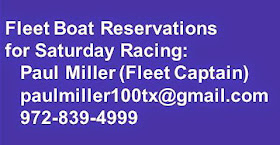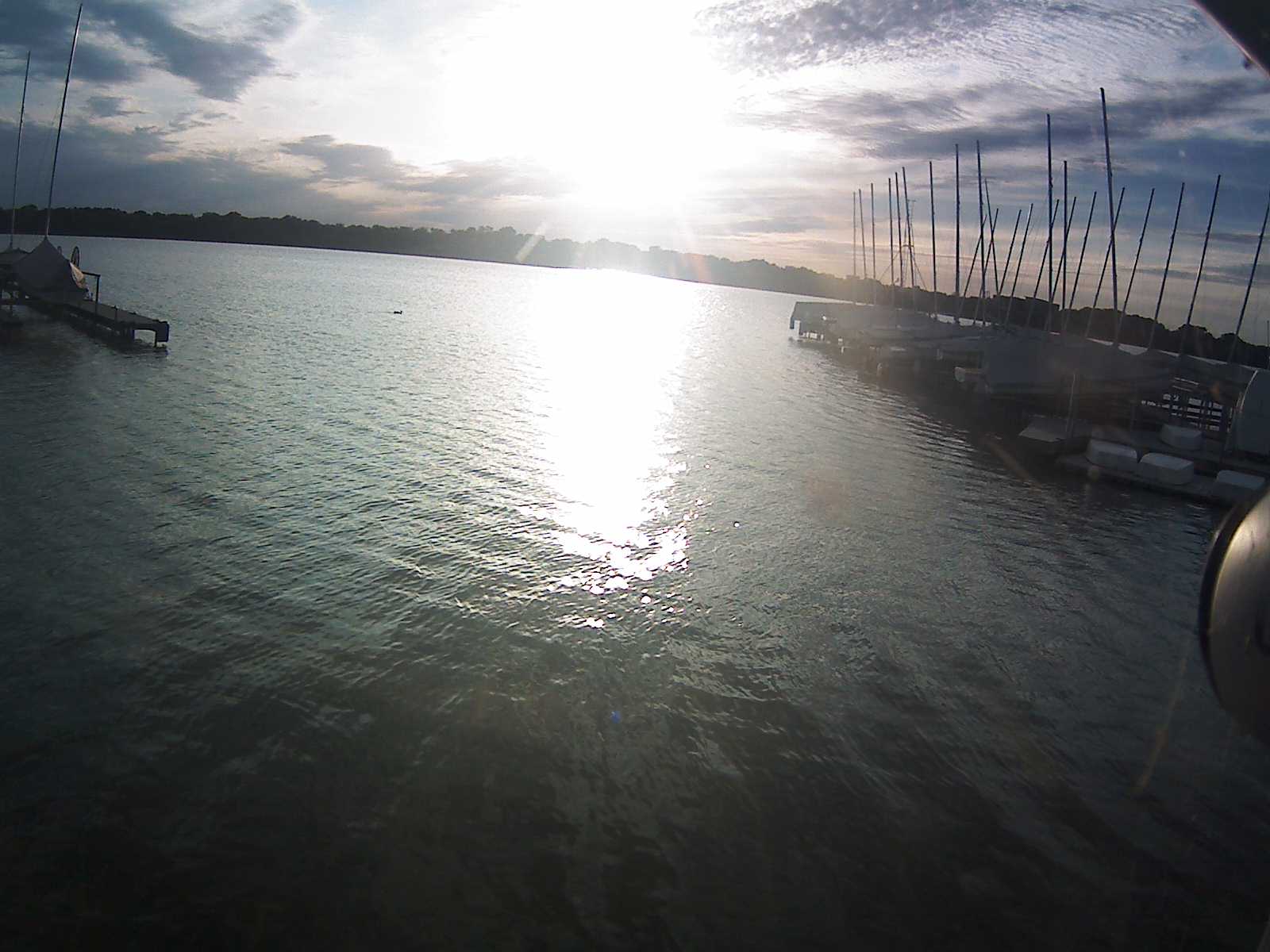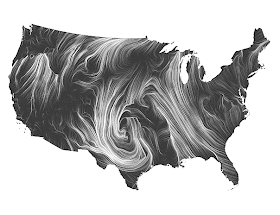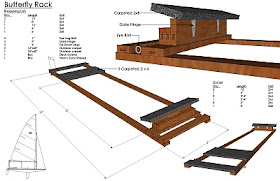STRATEGY: THE START
at 3.24.2009
Copyright (c) 2009 Scott Young
Scott Young wrote a few articles that were originally published in Austin Yacht Club’s Telltale Newsletter and he has given us permission to reprint portions of them here. For those that don’t know, Scott began as a Butterflyer many years ago and has gone on to become quite an accomplished sailor. Among many other things, he is the current North American Laser Master Champion and the only person to have won six Mallory Cups. No doubt his success can be attributed to his early Butterfly sailing experience.
Following are two of Scott’s articles, slightly rearranged. A long read but good information throughout, even when only applicable to keel boats. Given the requests we’ve had, this will likely the subject of discussion for our first Round Table.
How important is the Start?
In the sport of sailboat racing, the start is clearly the most important aspect of the race. The start generally separates the men from the boys (or women from the girls) and hopefully YOU from the rest of the fleet. Those who position themselves with clear air, good speed and put their boat at the favored end of the starting line greatly improve their chances for a successful race ... the START IS THE MOST IMPORTANT PART OF THE RACE!!!!
What are your pre-race thoughts?
What is my mantra? “What do I have to do to get in phase with the first wind shift and how do I get on the tack that takes me closest to the windward mark as soon as possible?”
The overriding goal, no matter where on the line you choose to start, is to attempt to put yourself in the most flexible position possible. This means keeping as many of your options open as you can and most importantly, putting yourself in a position to get on the favored tack as quickly as possible (see Mantra above).
Let’s begin with the process of determining which end of the line is favored for your start. Your strategy will be much different on a Wednesday night Laser or Sunfish start as compared with the start of the Melges 24 Worlds. Many times, on long starting lines accommodating 50 boats or more, a decision on where to start must be made very early into the starting sequence simply because there is not enough time to sail to the other end of the line if you change your mind. I have seen starting lines that take over 5 minutes to sail from one end to the other and this can time can be even delayed even further by light wind and chopped up air and water from the fleet.
Following are two of Scott’s articles, slightly rearranged. A long read but good information throughout, even when only applicable to keel boats. Given the requests we’ve had, this will likely the subject of discussion for our first Round Table.
How important is the Start?
In the sport of sailboat racing, the start is clearly the most important aspect of the race. The start generally separates the men from the boys (or women from the girls) and hopefully YOU from the rest of the fleet. Those who position themselves with clear air, good speed and put their boat at the favored end of the starting line greatly improve their chances for a successful race ... the START IS THE MOST IMPORTANT PART OF THE RACE!!!!
What are your pre-race thoughts?
What is my mantra? “What do I have to do to get in phase with the first wind shift and how do I get on the tack that takes me closest to the windward mark as soon as possible?”
The overriding goal, no matter where on the line you choose to start, is to attempt to put yourself in the most flexible position possible. This means keeping as many of your options open as you can and most importantly, putting yourself in a position to get on the favored tack as quickly as possible (see Mantra above).
Let’s begin with the process of determining which end of the line is favored for your start. Your strategy will be much different on a Wednesday night Laser or Sunfish start as compared with the start of the Melges 24 Worlds. Many times, on long starting lines accommodating 50 boats or more, a decision on where to start must be made very early into the starting sequence simply because there is not enough time to sail to the other end of the line if you change your mind. I have seen starting lines that take over 5 minutes to sail from one end to the other and this can time can be even delayed even further by light wind and chopped up air and water from the fleet.
With a long starting line, a decision can be made using the following inputs: the compass angle of the line relative to the wind direction; weather forecast (i.e. knowledge that a persistent shift will occur); a visual inspection of the wind velocity up the course; current and tide changes; or based on experience from prior regattas or races at the venue. To add further to the confusion, it is even possible to have different wind directions and velocity at opposite ends of long starting lines!
To determine the favored end of the line, I first start by taking a compass bearing sailing down the line on starboard tack. I try to line up the committee boat starting flag with my rudder and the leeward pin with the bow of my boat. When I feel like I am on the line, I take a compass heading. Once I know the heading, I add 90 degrees to the number. For example, if the starting line bearing is 90 degrees, by adding 90 more, I know the line is square to a wind direction of 180 degrees. Once I know my target head-to-wind, I head the boat into the wind to determine the actual wind direction. In this example, if I get a compass heading when head to wind of 165 degrees, I will know immediately that the leeward end of the starting line has a 15 degree advantage. Conversely, if my heading is 195, I will know that the windward end of the line is favored by 15 degrees.
Editor’s Note: Scott’s advice to me was don’t, I repeat, do not get a compass for small boat sailing on a lake or you will spend too much time with your head in the boat.
Usually, in most major regattas, the race committee does a pretty good job of squaring the starting line to the wind. Assuming they have done their job properly, neither end should be particularly favored but it is always a good idea to test using this method. The other variable affecting this process is the shifting of the wind. On one head-to-wind shot, you might get a reading of 180. Five minutes later, you might get a heading of 165. What do you do? Most sailing venues, especially Lake Travis, the wind will oscillate through a range of wind readings, many times as much as 30-40 degrees. With this being the challenge, the key is to try and guess what phase the wind will be in when you start. Depending on how quickly the winds shifts are filtering through, the favored end of the line can radically change in the last minute before the start.
What are clues to look for when trying to figure out what phase you will be in at the start? One way is to do a little pre-race homework. This includes taking several head to wind readings and trying to gauge how frequently the shifts are coming through. I like to look up the race course for streaks or puffs of wind and to try to establish a visual pattern in my mind as to how the wind is coming down the race course. I also like to watch other boats upwind to try and figure out whether they are headed or lifted relative to my upwind angle closer to the starting line. It is usually better to use racing boats for this but you can tell a lot by even watching cruising boats up the course.
As a rule of thumb, the shorter the starting line, the less advantage there is to being at the absolute favored end of the line. Try putting yourself in a position to be able to tack on the first headed wind shift or conversely, the ability to hold your starboard tack off of the line if you are lifted. On Lake Travis, my goal is to try and visualize where I want to be 5 minutes after the start and then figure out the optimum way to get to that place. Many times, that strategy involves being able to tack to port tack quickly after the start. With this philosophy, to start at the absolute leeward end involves risk. Unless your start is so good that you can force your competition on your hip to tack off (or better yet, immediately tack and cross the fleet), the risk is that you can get pinned by the boats on your weather quarter and have to sail through the first shift that comes through. Assuming I have reached a decision on which end I want to fight for with a couple of minutes to go, I often don’t make the final decision on where exactly on the line I want to be until the last 30-45 seconds before the start. I will often reserve my decision on the exact location on the line until I can figure out what my closest competitors plan to do. If I feel the boats around me don’t have the same starting skills, I will be a little more aggressive in fighting for the absolute pin or committee boat end.
Pin end start
My favorite approach is to come in on port tack near the pin with about 30-45 seconds to go. If I think the approaching starboard pack of boats is a little late, I will sail right up to them and do a slow tack on to starboard, and once I have completed my tack, I will hold the boats up to weather for as long as I can.
If successful, I will have carved out enough room to leeward to allow myself to bear off and gain speed for a good start without compressing myself so far down the line that I have to radically shoot the boat up at the pin end.
In doing this maneuver, you have to be careful not to allow any boats to bear off and go to leeward of you. You have to be constantly looking back at boats that are sailing fast down the line behind you. If I see someone coming, I quickly try to analyze what this person’s capabilities and motivations are. If they have the skills to challenge me for the pin, I will bear off hard before they have overlapped me to leeward and try and force their course back above mine. If they continue to leeward of me, I will try to force them as low as I can within the rules, and then sharply luff my boat up to weather to try and create a gap between the boats. If I do my job right, even if they get the pin, I will have enough room to leeward of me to be able to survive. Hopefully, they will be forced to point so high to make it to the pin that they won’t have the speed to pinch me off and I might be able to roll over them at the starting gun.
Once the gun has gone off, my first thought is “what do I have to do get myself in a position to tack”? The first weapon in your arsenal is to do your best to “pinch off” the boats on your immediate hip. By forcing boats to tack away to port early, you free up your options and you also create “blockers” on port tack should you decide to tack just to weather of them.
I also try to assess during those first few minutes, which tack is the best tack to be on. I have seen people many times make the mistake of immediately tacking to port as soon as they think they can cross the fleet. This is the proper strategy if you are headed on starboard tack because you will be then lifted on port and in phase with the oscillations. However, if you are lifted on starboard, keep going and wait for the shift. Don’t be so enamored with your good start that you hit the panic button and try to cross everyone immediately, only then to sail out of phase with the wind shifts.
If I am clearly headed on starboard tack at the start, I will try and tack immediately, even if it means ducking a few boats. On Lake Travis, staying in phase with the wind shifts is paramount. If I am tacking on the favored tack, I will immediately be making ground on the boats that I have ducked and at the next crossing when I am on starboard tack, I should have gained.
Committee boat end start
Starting at the weather end of the line requires a slightly different strategy. I like to approach the committee boat on port tack (similar to the leeward end approach). In this case though, if the windward end of the line is favored, there will be a lot of traffic to weave through. If I plan things right, I like to tack to starboard with about 30 seconds to go, just shy of the lay-line to the port rear corner of the committee boat when sheeted in to close hauled. Sailing towards the starting line trimmed to close hauled is much preferred as opposed to reaching into the line because you have much better control of your speed. If you are sailing too fast, the tendency will be to sail down into the boats below you and risk being pushed over the line or losing the hole you created. With this approach, the risk of being caught “barging” is also minimized. The key to this starting technique (as is always the goal) is to have a hole below you to be able to bear off into and accelerate off of the starting line.
Many sailors are their own worst enemies in that they work to carve out a good hole on the line and in the final seconds before the start, the anxiety of being over-early becomes so great that they bear off and sail down into the hole that they so carefully worked to create. The top starters develop a feel for how far off the line they are and keep their gap on the line free until the last possible moment. When they do bear off for speed, they are able to keep their air clear to leeward and are able to work hard to force the boats on their hip to tack off.
When you start near the committee boat, your assumption for this decision is often based on the feeling that the wind is in the right phase. With this being the case, a bad start will result in having to tack immediately to keep your air clear. Two bad things happen in this scenario. One is that you are immediately out of phase with the wind shifts from the beginning. The second is that you get forced to have to play the right side of the course which significantly reduces your options and flexibility.
There are some venues like Corpus Christi where the right will usually pay once the sea breeze has come in. In this case, starting at the committee boat end and tacking immediately can be a good strategy in your effort to get to the right side of the course. Even on Lake Travis, there are benefits to being one of the first boats to tack right, especially in a southerly breeze. The geographic bend in the wind can lift a port tack boat along the west shoreline heading towards the damn. If the wind is from the proper direction (generally from the Southeast), the bend in the wind created by the shoreline can lift the lowest boat along the shore while the boats in the center of the lake tend to get headed down towards the leeward boats near the shoreline.
Mid-line start
A mid-line start can have several strategic advantages. Many times the weather and leeward ends of the line tend to be more congested. The reason for this is that it is often easier to gage how close you are to the starting line at the extreme ends of the line so boats tend to congregate there. Often, the middle of the line is fairly open and the possibility of a good start exists without having to fight as hard as you would at the other two ends of the line.
The advantage of a mid-line start is that you are generally able to either hold starboard tack (if you are in the lifted starboard phase at the start); or due to less congestion, you may have the opportunity to get over on to port tack more easily if you feel you are in a headed (left) phase at the gun.
The key to a mid-line start is being confident with exactly where the starting line is. A common phenomenon, especially in big fleets with long starting lines is that the fleet often misjudges where the line is, and many times the boats in the middle of the line are several boat lengths shy of the starting line at the gun. This is known as mid-line sag.
One of these days after the races, ask a race committee member how far the fleet was off the line in the middle of the starting line. I bet you will be surprised. It is very common that the boats in the middle of the line are 2 to 3 boat lengths below the line. The middle of the line is rarely over-early. So how do you know where the line is to take advantage of this sag?
The best way is to try and get a line site of the starting line. This entails sailing just to the right of the anchored race committee boat and looking over the top of the race committee boat while trying line up the starting flag with the leeward starting pin. Then, try to pick out a feature along the shoreline such as a house, boat dock, building etc. that is in line with the starting line.
Once this is accomplished I like to sail to the location on the line where I am most likely to start. When I reach this position, I will have one of my crew go to the bow and sight down the line as I sail on starboard tack, close-hauled across the line. Using the object on the shoreline to the left of the starting pin, I ask the person on the bow to tell me when the object on shore lines up with the leeward pin. When we reach that point, we are theoretically on the line.
As helmsman, I also like to have my own visual as I am sailing for the line. As we are crossing the line on starboard tack, when my crew on the bow tells me that we are on the line, I immediately look to leeward in my normal upwind steering position and try and get a visual on shore immediately in line with the leeward pin. In this case, my line site on shore will be slightly different than the perspective my bow person will have due to the distance between us. I will usually defer to the bow person in the final seconds but it is really nice to be able to make a quick visual check myself.
On larger keelboats, don’t hesitate to have your bow person up on the bow pulpit telling you or sending you hand signals as to where you on the line. Practice this process with your crew and then listen to them! The bow person’s perspective is going to be much better than yours and when they start waving you to go, go!
In addition, keep in mind where you are relative to the boats around you. As a rule, I try to never let the boat that is to leeward of me have their bow forward of mine. I don’t want them to be in a lee bow position off of the line. I don’t worry so much about having the boat to weather of me covering me up a little at the start. It is always safer to have the windward boat blocking the view of your boat from the race committee. I will try to stay covered up until the last possible second. Usually, by being slightly to leeward, you can eventually work your bow clear and hopefully get yourself in a good lee bow position and start pinching off the boat that you used for cover.
If the boats to leeward and to windward are ahead of you, even if you think you are close to the line, you have to trim-in and accelerate with them, even if you are all ultimately over-early. You simply can’t afford to be rolled from above and pinched off from below. Nine out of ten times, you will either be safe, or the race committee will call for a general recall.
The only time that I would suggest that you stay away from the middle of the line is after several general recalls and the race committee has put up the “I flag” indicating that the around-the-ends rule is in effect. This means that if you are over early in the middle of the line, the only way to exonerate yourself is to round one end of the line or the other and restart. If you are over early in the middle, it could result in a long sail to get around one end of the line to restart.
Sometimes in large regattas with really long starting lines, a mid-line boat is anchored on the starting line. Usually, the folks on the mid-line boat are not sighting the line and calling boats over early. Sometimes these boats are not even situated perfectly on the line. If you have done your homework, you can determine how close to the mid line boat is to the line and use it as a great reference point. In fact, when ever a mid-line boat is anchored, I like to start just to weather of it. It can provide you a great buffer from boats trying to get on your lee bow, and if you use it correctly, you ought to be able to get yourself very close to the line.
To summarize, the best start on Lake Travis is the one that allows you to get on or stay on the tack that takes you closest to the weather mark as soon after the start as possible. All other decisions should be predicated on that basic strategy. Getting in phase with the wind immediately after the start will usually take you in the direction on the race course that you want to go.









